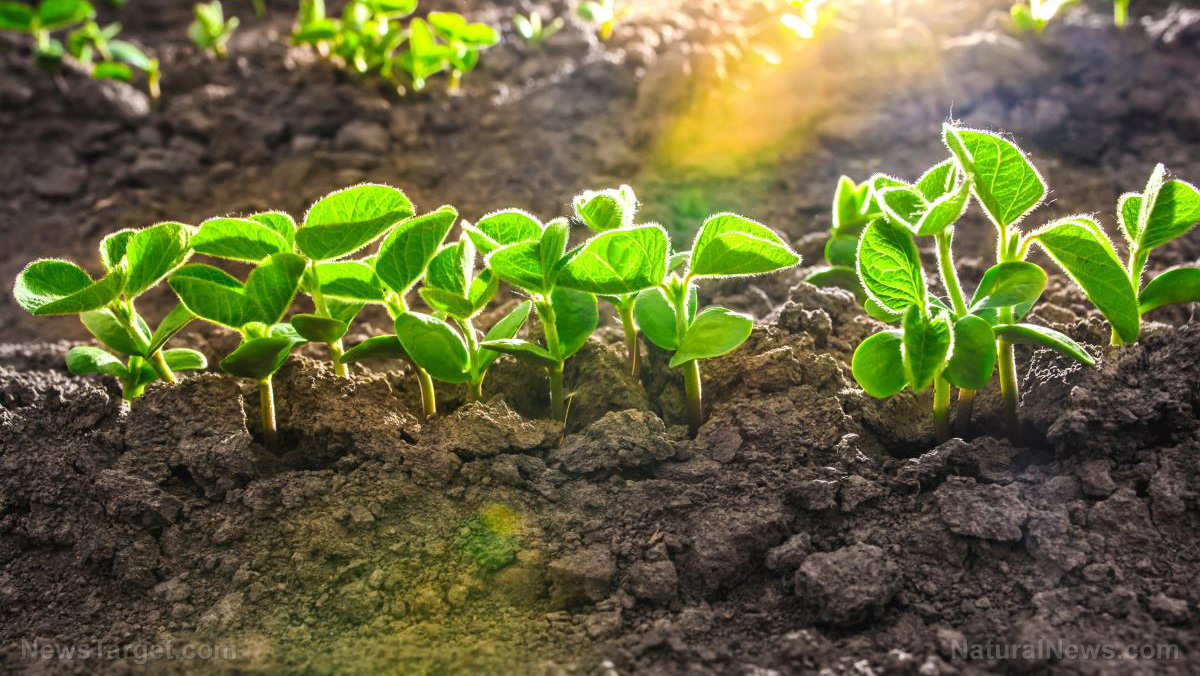The plot thickens: Use these 4 strategies to help keep your soil rich and healthy

(Natural News) Part of keeping your garden healthy is taking care of the soil. Soil health is a vital part of agriculture and its condition affects the plants that grow in it. It also influences the ecosystems of microorganisms living within the soil, including small animals like worms and bacteria.
If you’re having trouble with growing plants or you’re just about to start gardening, prepare the soil first. Here are four strategies you can use along with other tips to keep soil healthy. (h/t to RunamakAcres.com)
4 Strategies for improving soil health
Cultivating the soil is a must for any gardener. When the soil is healthy, life flourishes. Since not all plots of soil are healthy and ready for planting, it falls on the gardener to ensure soil health.
1. Avoid tilling the soil
Some gardeners believe that tilling the soil – the process of breaking the soil down for planting – is beneficial. However, more experienced gardeners are saying that it is the opposite.
Soil health depends on ensuring that the microorganisms in the soil food web have a flourishing environment. When you till the soil, you break down that environment. The microorganisms are then forced to rebuild that ecosystem.
Tilling less also makes organic materials decompose longer. This means that organic matter has more time to accumulate, thus providing a suitable habitat for soil microbes.
2. Use cover cropping
Cover cropping has two purposes. First, it prevents erosion because the roots of the crops hold the soil in place. Secondly, it helps regulate the temperature of the soil. Microbes flourish in soil that has a temperature of 75 degrees. If it’s too cold or too hot, it can stunt or kill them. Some examples of cover crops include oats and field peas.
 | Discover how to prevent and reverse heart disease (and other cardio related events) with this free ebook: Written by popular Natural News writer Vicki Batt, this book includes everything you need to know about preventing heart disease, reversing hypertension, and nurturing your cardiac health without medication. Learn More. |
It is crucial to know that different kinds of plants have varying effects and contributions to the soil. For example, legumes help water reach into the soil while grasses have intricate root systems that help prevent erosion. Moreover, a variety of plants attracts different microbes. This helps provide a richer and more complex ecosystem for the soil.
Do your research and find out more about your soil. Learn which crops are best for cover crops and for harvesting to help ensure soil health.
4. Manage nutrients
For a gardener, one of the key things to invest in is a soil test kit. This will give a better idea of the levels of compounds in the soil, particularly nitrogen, phosphorus and potassium. Some soil test kits may have other features.
After using the kit, you’ll have a better idea of what your garden needs. If the soil has lower levels of a certain compound, employ natural methods like compost, slight tilling or organic fertilizers to increase them. One example is mixing compost with sandy soil to raise its nitrogen levels.
Other tips to maintain healthy soil
You are now equipped with four strategies to improve soil health. The next step is making sure that it stays that way. Here are some tips to keep your soil nutrient-rich and healthy:
- Drain standing water. This prevents erosion and, depending on the plant, ensures that its roots won’t drown. You can try to avoid standing water with landscaping, by digging a trench or installing a drainpipe.
- Keep off wet soil. Walking or driving on wet soil compresses the soil. It makes it harder for roots to spread and for water and air to pass through.
- Be smart about fertilizing. Always use organic fertilizers, like compost. Make sure to test the soil first before applying anything. Always follow the instructions on how much you should apply. Too much of it can be bad for the plants and your soil.
Healthy soil is one of the key ingredients to having a flourishing garden that produces nutrient-rich food. Take care of the soil and reap its rewards with fresh produce and lush foliage. (Related: Establishing the link between soil health and animal growth: Healthier soils make for healthier animals.)
There are a lot of other strategies you can use to improve your garden. Head to HomeGardeningNews.com for more information that will keep your garden lush and healthy.
Sources include:



